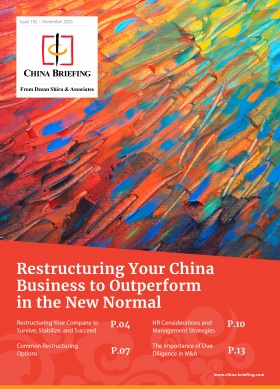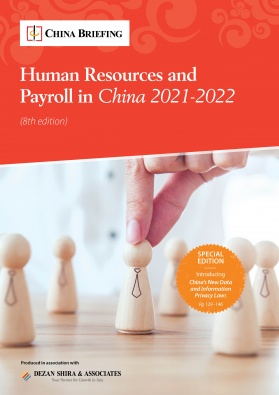How to Push a Supplier to Switch to a Zero Defect Mindset and Take Action?
Many buyers have a strategic imperative to improve quality, and yet their suppliers in Asia often resist any effort to improve their operations. The hardest part is to convince them to take the first step. If the initial approach proves fruitful then over the years, the supplier can achieve a zero defect manufacturing mindset.
A survey by the American Society for Quality showed that the biggest hurdle buyers face in improving supply chain quality is “working with suppliers to improve performance”. That was in 2016, and we believe very little has changed.
Many companies have tried several approaches to get their key suppliers to improve. That is particularly difficult when those companies need to switch to pursue a “zero defect” objective and their suppliers resist taking even the first step.
What is zero defect?
Zero defect is a quality objective, which refers to the improvement of manufacturing systems to the point where zero or near-zero defectives are shipped to buyers. It is a way not only to satisfy buyers, but also to eliminate all the wasted activities and materials associated with defective manufacturing. Zero defect can ultimately become a mindset, with the whole organization not tolerating any form of poor quality.
Based on our experience guiding our clients through transformation projects, here is our practical advice. It starts with the buyer taking decisive actions. If consultants are involved, we also share some good practices.
What the buyer needs to do
If the buyer does not have leverage over the supplier and if the buyer is not ready to make strong decisions, the switch to zero defect is not likely to happen. Let us explain this further.
We should mention there is an important prerequisite. As the buyer, you need your supplier to clearly understand your quality standard and you need them to agree with your evaluation of their product quality. Without that prerequisite, the supplier’s teams will focus on differences in appreciation of what a defect is, rather than working on improvements.
We have observed buyers take several approaches that have been successful in persuading key suppliers to embark on a quality improvement program and, ultimately, to switch to a zero defect mindset.
Here are examples of approaches that have worked.
Make the supplier afraid of losing your business
- Develop at least one backup source and ensure they can provide good quality.
- Collect data about the number of PPM (parts per million) defectives, and make sure the supplier knows that. Make your target known, too.
- Give the supplier a warning: if no marked improvement is seen in the next six months, you will reduce their business by X percent (for example by 20 percent after six months, then by another 20 percent after 10 months, etc.)
- In parallel, offer to help them improve their systems and processes.
Make the situation unbearable to the supplier
- Have a backup source (as is usually the case in automotive supply chains) or have a strong contract to ensure they will not stop supplying to you.
- Collect data about the number of PPM defectives, but also about all the costs it triggers in your organization.
- Re-invoice some/all those costs to the supplier.
- In addition, when you see several defects, force them into containment (that is, they pay an inspection agency to check 100 percent of the parts/products until that agency finds zero defect).
- Switch from classic acceptance sampling (based on AQL or Acceptance Quality Limits) to an ‘acceptance on zero’ plan. Your inspectors will then need to check fewer samples and you will save on appraisal costs.
- In parallel, offer to help them improve their systems and processes.
There are ways to make these approaches more likely to succeed:
- The buyer communicates a lot to the supplier about the fully loaded costs it incurs because of defects.
- A buyer representative (can be a consultant) spends a few days in the factory and explains how poor quality adds costs to the factory’s bottom line.
Note: the supplier may not acknowledge these observations formally for fear that the buyer’s purchasing staff uses this information to push prices down. As a general rule, if representatives of the buyer’s purchasing department are involved, the supplier will be less open, will provide less data, and will be less likely to confirm the findings. - A buyer representative starts to help the supplier on some of the process and quality engineering work that is needed to improve quality. This may take the form of go/no-go gauges, checking fixtures, mistake proofing devices, etc. The supplier rarely resists such assistance if there is a direct and measurable impact on the proportion of defects, and if it does not add significant costs in their operations.
- In some cases, to get to zero defect, the buyer’s designers need to make significant changes in the way they work. Listening to the difficulties in the factories and making easier-to-make designs can go a long way in showing goodwill and getting a supplier to cooperate.
A good process for consultants to assist with the transition
If you decide to involve consultant(s), their following a few ‘good practices’ can go a long way.
The lead consultant needs to have a management meeting at the factory to introduce his team and to explain how he can help the factory reach their objectives.
Good preparation and good communication are quite important:
- The management has to feel that consultants understand their operational issues (that requires a rather in-depth initial assessment) and have the experience to help address those issues.
- If the factory’s management opens up and shares their challenges and objectives, that can be the basis of a successful plan. It is generally better to head in a direction the factory’s top management feel is important to their strategic goals, if that’s a way to get much closer to zero defects. The breadth and depth of changes needed in the organization is such that total support from their owners and managers is a must.
How to start?
Many companies lack the confidence to push some of their key suppliers hard. That’s understandable.
A good start is communicating deeply with your key suppliers and finding one that is motivated – for example, their top management is aware that changes are needed, and they have a lot of extra business to gain if their performance improves.
Once a project with one supplier has shown positive results, you will have more confidence pushing your other suppliers harder. And, as you gain experience implementing operational changes in more of your supplier base, you will be better at picking the right candidates and at persuading them to follow the desired path.
Our external contributor is a partner at China Manufacturing Consultants (CMC). Founded in 2012, CMC is a manufacturing consulting firm that advises on and executes manufacturing initiatives from the boardroom to the shop floor. CMC shares effective approaches to convince key suppliers to take the actions necessary to markedly improve product quality and delivery times. The author may be reached at renaud.anjoran@cmc-consultants.com
About Us
China Briefing is written and produced by Dezan Shira & Associates. The practice assists foreign investors into China and has done so since 1992 through offices in Beijing, Tianjin, Dalian, Qingdao, Shanghai, Hangzhou, Ningbo, Suzhou, Guangzhou, Dongguan, Zhongshan, Shenzhen, and Hong Kong. Please contact the firm for assistance in China at china@dezshira.com.
Dezan Shira & Associates has offices in Vietnam, Indonesia, Singapore, United States, Germany, Italy, India, and Russia, in addition to our trade research facilities along the Belt & Road Initiative. We also have partner firms assisting foreign investors in The Philippines, Malaysia, Thailand, Bangladesh.
- Previous Article China Public Holiday 2022 Schedule
- Next Article The Chengdu-Chongqing Twin City Circle – The Plan to Boost Regional Development








